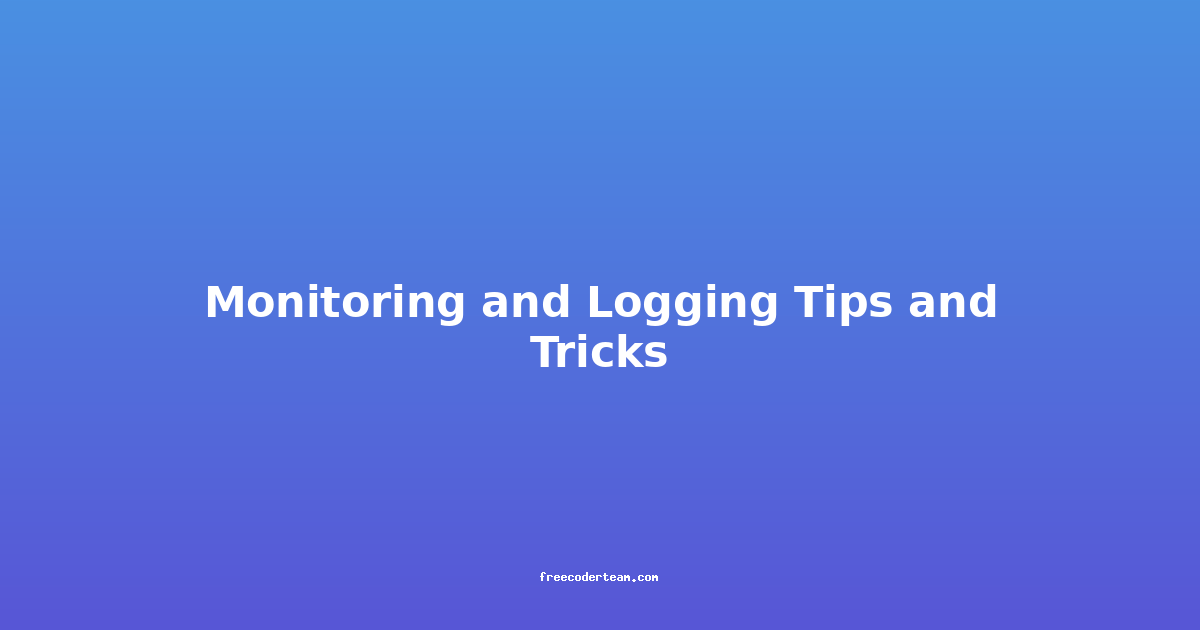Deep Dive into Code Review Best Practices: A Comprehensive Tutorial
Code reviews are a cornerstone of software development, serving as a critical process for ensuring code quality, knowledge sharing, and team collaboration. A well-executed code review can catch bugs early, improve code maintainability, and foster a culture of continuous learning. However, without proper practices, code reviews can become time-consuming, ineffective, or even demoralizing. In this tutorial, we’ll explore best practices for conducting effective code reviews, complete with practical examples and actionable insights.
Table of Contents
- Why Code Reviews Matter
- Key Principles of Effective Code Reviews
- Practical Steps for Conducting a Code Review
- Best Practices for Reviewers
- Best Practices for Reviewees
- Tools to Enhance Code Reviews
- Common Pitfalls to Avoid
- Conclusion
Why Code Reviews Matter
Code reviews are not just about catching bugs; they are a vital part of the software development lifecycle. Here’s why they matter:
- Quality Assurance: Code reviews help identify bugs, security vulnerabilities, and performance issues before they reach production.
- Knowledge Sharing: They allow team members to learn from each other’s code, promoting best practices and reducing knowledge silos.
- Collaboration: Code reviews foster a culture of collaboration, where developers can provide feedback and suggestions in a constructive manner.
- Maintainability: Reviews ensure that code adheres to coding standards, making it easier to maintain and scale over time.
Key Principles of Effective Code Reviews
Effective code reviews are guided by a few core principles:
- Focus on the Code, Not the Person: Reviews should be about the code, not the person who wrote it. Constructive feedback should be objective and solution-oriented.
- Balance Between Quality and Speed: While thorough reviews are important, they should not slow down the development process excessively.
- Consistency: Establish clear guidelines and standards for code reviews to ensure consistency across the team.
- Two-Way Communication: Reviews should be a dialogue, not a one-way critique. Reviewers and reviewees should engage in discussions to reach a mutual understanding.
Practical Steps for Conducting a Code Review
Here’s a step-by-step guide to conducting an effective code review:
1. Understand the Context
- Review the Pull Request (PR) Description: Before diving into the code, read the PR description to understand the purpose of the changes.
- Check the Scope: Ensure you understand what the changes are intended to achieve.
Example:
**PR Description**:
"Fixed a bug where the user profile page was not loading correctly due to a null pointer exception."
2. Review the Code
- Check for Clarity and Readability: Ensure the code is easy to understand and follows established coding standards.
- Verify Functionality: Confirm that the changes address the intended purpose without introducing new issues.
- Look for Edge Cases: Consider potential edge cases that might not be covered by the current implementation.
Example:
// Before
public String getUserProfile(String userId) {
User user = userRepository.findById(userId);
return user.getName(); // Potential NPE if user is null
}
// After
public String getUserProfile(String userId) {
User user = userRepository.findById(userId);
if (user == null) {
throw new UserNotFoundException("User not found");
}
return user.getName();
}
3. Provide Constructive Feedback
- Be Specific: Instead of saying "This is bad," provide specific feedback like "Consider adding a null check here to prevent potential NPEs."
- Suggest Improvements: Offer alternative solutions or best practices when appropriate.
- Use Positive Language: Frame feedback in a positive and constructive manner.
Example Feedback:
Suggestion: Consider adding a null check for the `user` object to prevent potential NPEs. This will make the code more robust.
4. Test the Changes
- Run Tests: If possible, run the tests locally to verify that the changes do not break existing functionality.
- Manual Testing: Perform manual testing for critical features to ensure they work as expected.
5. Approve or Request Changes
- Approve: If the code meets the standards and addresses the issue, approve the PR.
- Request Changes: If there are issues, clearly communicate what needs to be fixed and why.
Best Practices for Reviewers
1. Stay Focused
- Review in Small Chunks: Avoid reviewing large amounts of code at once. Break it down into smaller, manageable sections.
- Use a Checklist: Create a checklist of things to look for, such as coding standards, security, and performance.
2. Be Timely
- Review Promptly: Provide feedback within a reasonable timeframe to avoid delays in the development process.
- Set Expectations: Communicate your availability for reviews to ensure timely feedback.
3. Use Tools Wisely
- Leverage Code Review Tools: Use tools like GitHub, GitLab, or Bitbucket to leave comments directly on the code.
- Highlight Key Issues: Use annotations to draw attention to critical areas.
Best Practices for Reviewees
1. Prepare for Reviews
- Follow Coding Standards: Ensure your code adheres to the team’s coding standards before submitting for review.
- Write Clear Commit Messages: Provide clear and concise commit messages to help reviewers understand the changes.
2. Be Open to Feedback
- Stay Humble: Approach feedback with an open mind, even if it challenges your initial approach.
- Engage in Dialogue: Discuss feedback with reviewers to clarify points and reach a consensus.
3. Address Feedback Promptly
- Act on Suggestions: Implement feedback in a timely manner to keep the review process moving forward.
- Communicate Progress: Keep reviewers updated on the status of changes, especially for larger PRs.
Tools to Enhance Code Reviews
1. Code Review Platforms
- GitHub Pull Requests: Offers a robust platform for code reviews with inline comments and discussion features.
- GitLab Merge Requests: Provides similar functionality with additional integrations for CI/CD pipelines.
2. Static Code Analyzers
- SonarQube: Automatically detects code smells, bugs, and security vulnerabilities.
- ESLint: For JavaScript, it enforces coding standards and identifies potential issues.
3. Code Review Tools
- Husky: Automates pre-commit hooks to run linters and tests before code is committed.
- Reviewable: A dedicated tool for managing code reviews with advanced features like automated suggestions.
Common Pitfalls to Avoid
1. Micromanagement
- Avoid Over-Reviewing: Don’t nitpick minor issues that don’t impact functionality or maintainability.
- Focus on High-Impact Areas: Prioritize feedback on critical areas like security, performance, and maintainability.
2. Lack of Consistency
- Establish Guidelines: Ensure the team agrees on coding standards and review processes.
- Regular Training: Conduct training sessions to keep everyone aligned on best practices.
3. Delayed Feedback
- Set Deadlines: Establish a timeline for reviews to avoid delays.
- Prioritize Reviews: Focus on high-priority PRs to ensure critical changes are reviewed promptly.
Conclusion
Code reviews are a powerful tool for improving code quality, fostering collaboration, and promoting learning within a development team. By following best practices, using the right tools, and maintaining a constructive mindset, teams can make code reviews an integral part of their development process.
Remember, the goal of code reviews is not to find fault but to improve the code and the team. By focusing on collaboration, consistency, and communication, you can create a culture where code reviews are seen as a valuable opportunity for growth rather than a chore.
Key Takeaways:
- Focus on the code, not the person.
- Use tools to streamline the review process.
- Provide constructive, specific feedback.
- Stay consistent with coding standards and review practices.
By implementing these best practices, you can ensure that code reviews are effective, efficient, and beneficial for everyone involved. Happy reviewing! 🚀
If you have any questions or need further clarification, feel free to reach out!




